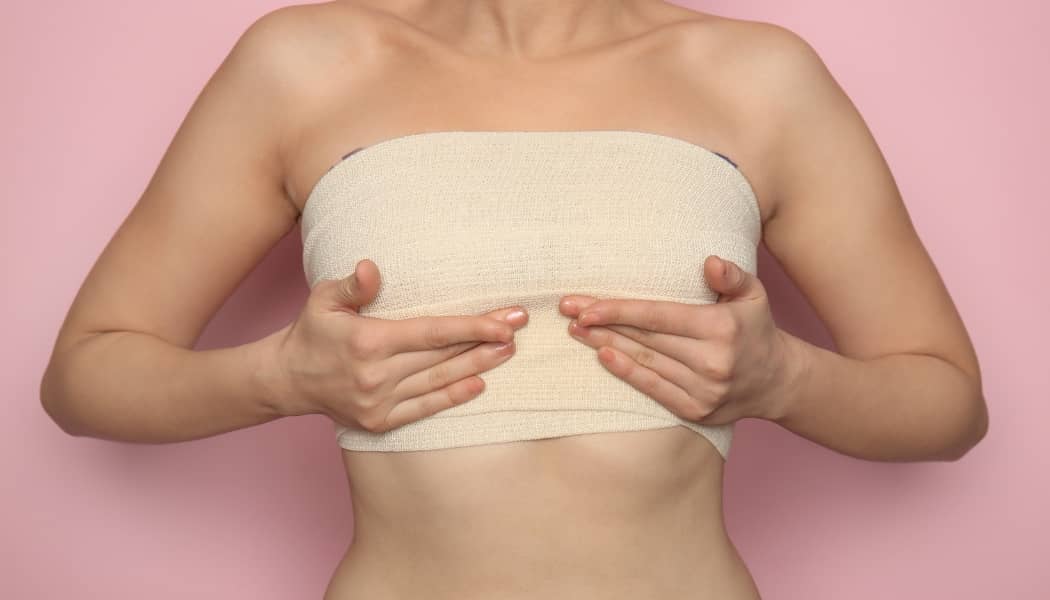
A main concern for women considering breast surgery is the appearance of breast augmentation scars. As a specialist in this area, I know that getting the best outcomes while decreasing scarring is an essential goal for those going through the surgery.
In this post, we will delve into the types of scars associated with various surgical techniques and incision options. We’ll also discuss how to care for your incisions during the healing process to ensure they heal as discreetly as possible.
We will explore methods for reducing breast augmentation scars through strategic placement and surrounding skin treatments. Lastly, if you’re already dealing with existing scars from previous procedures, we will provide guidance on treatment options to improve their appearance.
Types of Breast Augmentation Scars

The following are the most common types of breast augmentation scars.
Incisional Scars
Incisional marks, a type of scar typically caused by breast augmentation procedures, may be visible in areas such as the under-breast area, around the areola, or in the armpit.
Hypertrophic Scars
These raised, red scars can develop within weeks after surgery and may continue to thicken for several months before gradually improving.
Keloid Scars
Keloid scars are the worst, with thickened tissue growing beyond its original boundaries. This is due to abnormal collagen formation during wound healing.
For more information on keloid scarring, check out Mayo Clinic’s website.
Knowing what to expect from breast augmentation scars is important. Taking care of them properly and setting realistic expectations is vital.
Scar Care After Breast Augmentation

Proper scar care after a breast augmentation is crucial for optimal healing and reducing the appearance of scars.
- Keep it clean: Gently cleanse the incision site with mild soap and water daily.
- Stay out of the sun: Sun exposure can cause hyperpigmentation in scars, making them appear darker.
- Eat well: A balanced diet rich in vitamins A, C, and E promotes healthy skin regeneration.
- Moisturize: Apply a silicone-based gel or cream designed for scar treatment to keep the area moist.
- Massage: Massaging around the incision site can improve blood circulation and encourage collagen production.
Follow any specific instructions provided by your surgeon and be patient as everyone’s body heals differently.
Minimizing Breast Augmentation Scars
Worried about visible scars after breast augmentation? Here’s what you can do:
Choose an Experienced Surgeon
Pick a board-certified plastic surgeon with refined techniques for smaller incisions and better wound healing.
Discuss Incision Placement Options
Talk with your surgeon about incision placement options to find the one that best suits your needs.
Follow Pre-Operative Instructions Carefully
- Eat well-balanced meals and stay hydrated for optimal healing.
- Avoid smoking and limit alcohol consumption to promote proper immune function and faster wound repair.
Adhere To Post-Operative Care Guidelines:
Follow your surgeon’s instructions, including:
- Keeping the incision site clean and dry
- Avoiding strenuous activities that could strain healing tissues
- Wearing a supportive surgical bra or compression garment as recommended
By taking these steps, you can reduce the risk of visible breast augmentation scars and achieve the best possible aesthetic outcome.
Treating Existing Breast Augmentation Scars
If you’re unsatisfied with your current breast augmentation scars, there are techniques to minimize their visibility and increase self-esteem.
Laser Treatments
Laser treatments can stimulate collagen production and scar tissue breakdown, which can help smooth out the skin’s surface and fade discoloration.
Topical Creams
Topical creams with silicone or hydroquinone reduce scar visibility by softening, flattening, and lightening scars over time.
Silicone Gel Sheets
- Purpose: Silicone gel sheets provide gentle pressure on raised scars while also creating a protective barrier against bacteria.
- Efficacy: Studies have shown that using silicone gel sheets can significantly improve hypertrophic (raised) scarring after surgery.
- Daily Use: Place the sheets directly onto clean skin over your scar for at least twelve hours per day to use them effectively.
Prior to starting any scar management, consult a plastic surgeon or dermatologist to decide the best plan of action and guarantee desired outcomes.
FAQs in Relation to Breast Augmentation Scars
Do Breast Implant Scars Ever Go Away?
Breast implant scars typically fade over time but may not disappear completely; proper scar care and treatments like silicone gel sheets or laser therapy can help improve their appearance.
How Bad Are Breast Implant Scars?
The severity of breast implant scars varies depending on factors like surgical technique, incision location, and individual healing response. The primary influence on scars is determined by genetics and skin tone. Skilled surgeons aim to minimize scarring by placing incisions in discreet locations.
What Is the Best Breast Augmentation Scar?
The “best” scar depends on individual preferences and anatomy; inframammary incisions often result in less visible scarring due to natural folds hiding them, while periareolar incisions can also be well-concealed but may affect nipple sensation more than other options.
How Do They Hide Breast Implant Scars?
Surgeons hide breast implant scars in plain sight by strategically placing incisions in inconspicuous areas such as under the breasts’ creases, around the areola’s edge, or within armpit folds; post-surgery care includes using silicone gel sheets or creams to promote optimal healing for minimal visibility.
Your Takeaway: Breast Augmentation Scars
Concerned about breast augmentation scars? Don’t worry, there are ways to minimize or treat them!
Proper scar care and communication with your surgeon are the keys to achieving the desired results.
Types of scars and methods for minimizing or treating them vary, so do your research and consult with a professional.
Some options include silicone sheeting, massage therapy, and laser treatments.
Remember, everybody is different, so what works for one person may not work for another.
With the right approach, you can feel confident and beautiful in your own skin.

